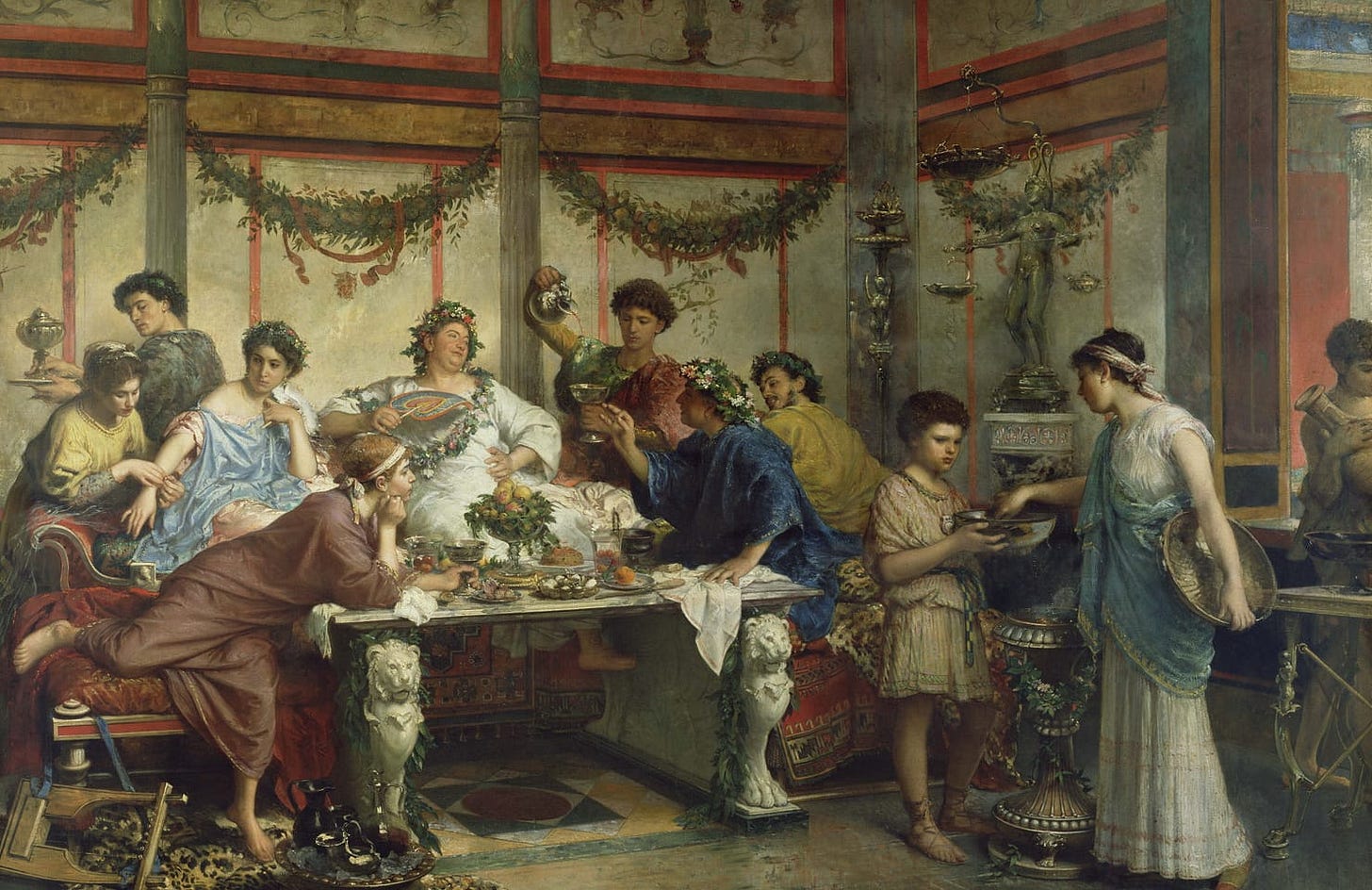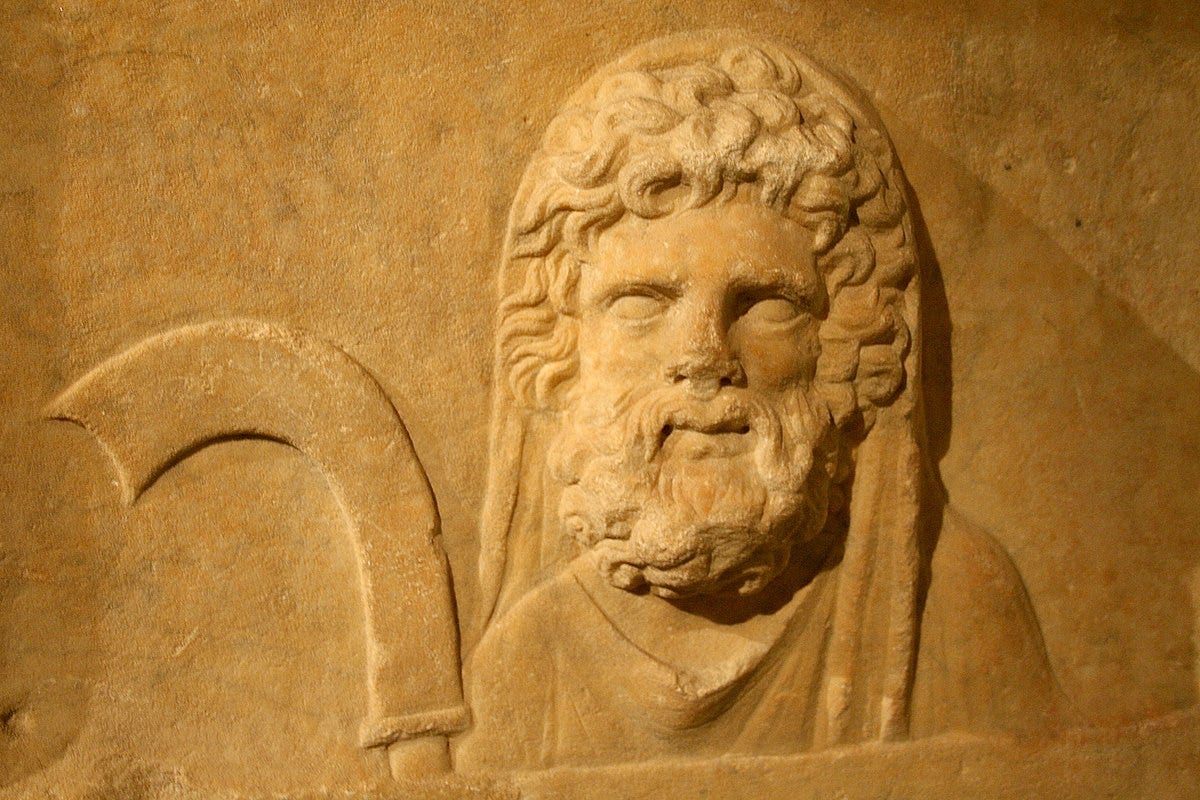In Astrology Saturn is normally just seen as a source of limitations, rules and restrictions. However Saturn in mythology is much more complex. Saturn actually embodies a duality that reflects both the constraining and liberating aspects of authority, time, and existence itself. As a figure rooted in Roman mythology, Saturn represents the complexities of generation and dissolution, suggesting that through the limitations and structures he imposes, there lies an opportunity for renewal and growth. Saturn was a god in ancient Roman religion, and a character in Roman mythology. He was described as a god of time, generation, dissolution, abundance, wealth, agriculture, periodic renewal and liberation. In Roman and Etruscan reckoning Saturn is a wielder of lightning; no other agricultural god (in the sense of specialized human activity) is one. Hence the mastership he has on agriculture and wealth cannot be that of a god of the third function, i.e. of production, wealth, and pleasure, but it stems from his magical lordship over creation and destruction. As a planet Saturn is connected to caution, delay, constriction, limitation, responsibility, rules and regulations, pain, fear, authority, discipline, control and denial. This can include themes of responsibility such as self-discipline, punctuality, and the conservation of material resources.
Kronos' feast day was December 17th, and the Saturnalia continued for seven days thereafter, despite attempts of Emperors to shorten it. His statue, kept bound with rope during the rest of the year, was ritually untied on this day. Social divisions were, within acknowledged limits, either abolished or inverted during Saturnalia. The wearing of felt hats, representing liberation, was customary for all during the celebrations. It was customary to give gifts on the last day; originally, these were clay heads, likely representing former sacrifices. These gifts were accompanied by written mottoes. Kronos in this form symbolized the return to the golden age, thus also representing a return to the primordial ways of being.
The Shadow and the Persona
Saturn's influence often manifests as a confrontation with the shadow, particularly in relation to societal expectations and personal limitations. This dynamic can lead individuals to internalize a harsh inner critic, showing how the role of Kronos (the internalised familial and societal expectations and norms) can act as an internalized accuser. The need for control if put on others or oneself, when disconnected from primal instincts and authenticity, can create a tyrannical aspect of Saturn that inhibits true self-expression. The rigid structures of authority imposed by Saturn can alienate individuals from their inner creativity and instincts, leading to a repression of essential aspects of the self.
In his tyrannical form from a Jungian lens, represents a state of overwhelm from the unconscious, through a disconnection to instinct. Where the need of control is externalized. The deifying power of the Underworld, usually in serpentine form, also cloaks the god in a mask of terror. Where the Self is cloaked through the mask of the Shadow. Next to Kronos in archaic times to have been associated with having the form of a three headed serpent, or a separate serpent. Yet when it now comes to Kronos, he is tied to serpentine symbolism, pointing towards his original nature as an uninhibited libido figure, representing power and fertility.
Where with the establishment of civilisation and societal order, he became associated with law, order and social taboos. Becoming a sort of paradox. Making the figure as a symbol of source of libido into a figure that becomes the source of it's restriction. Kronos's restriction of the primal forces of Ouranos signifies the ego's attempt to regulate and control instinctual drives. In the best case scenario, Kronos represents discipline and meticulous control. Which can also be outwardly imposed upon others. Which might seem good to some, but actually cuts us off from the Self and the creative forces within us. This leads to not only rigid societal expectations, but also to scapegoating dynamics. Where the internal self-imposed restriction ties into the repression and limitations that the individual experiences.
Rituals of Liberation: Saturnalia and Primal Instincts
The ancient Roman festival of Saturnalia symbolizes the potential for liberation from societal constraints. During this time, social hierarchies were inverted, and individuals were encouraged to shed their rigid personas, reconnecting with their primal instincts. This celebration provides a powerful metaphor for how, through the acknowledgment of our shadow selves, we can integrate aspects of our psyche that have been repressed due to fear of societal judgment. The ritual untethering of Saturn’s statue represents a release from the self-imposed bonds of limitation, allowing for a more authentic expression of the self. The story of Kronos and Zeus can be seen as a metaphorical journey of overcoming the internalized inner critic and reclaiming one's true self. The tyrannical side of Kronos symbolizes the internalized restrictions, control, and repression that may result from being scapegoated or put in a place of powerlessness in the face of external authority.
Transformation of Authority
The evolutionary journey of Saturn involves transcending the tyrannical aspects of authority, both external and internal, and cultivating a healthier relationship with discipline and responsibility. This process requires individuals to navigate their fears and limitations, transforming their understanding of authority from a source of repression to a wellspring of personal empowerment. The narrative of Kronos devouring his children can be viewed as a metaphor for the suppression of creative and instinctual forces, while the eventual overthrow by Zeus symbolizes the liberation of the self from the constraints of unconsciousness.
From External Control to Internal Authority
The lesson for Saturn is to set up a different relationship between society and the individual. More based on justice, and a focus on cultivating an internal morality in people, then enforcing from outside, to connect to a more self-controlled form of libido expression. Which is not self-denying, or tyrannical, but more knowing learning how to deal with ones impulses, through discipline, whilst letting it flow in a conscious manner. Which means acknowledging the impulses, and giving them conscious expression. Which allows for more creativity as well.
We can see this symbolically also through Rhea, who is associated with the idea of raw flowing libido, and Kronos in his tyrannical restriction, having Zeus as their son, who unites flow and discipline in a conscious manner. His overthrow of Kronos symbolizes the ego's liberation from the constraints of unconsciousness and its assertion of autonomy, personal authority and moral agency. Saturn in that way through external authority is the source of restriction in ones life, but when internal authority is realised is ones source of liberation. When individuals reclaim their inner authority, they move beyond the fears that have restricted them, embracing a more fluid and authentic form of self-expression. In a way the areas of limitation in ones chart are not just limitations but areas where what that representation represents can be integrated and embodied by the individual to be their own authority. Saturn teaches us through its limitations what the areas for development and mastery are.






